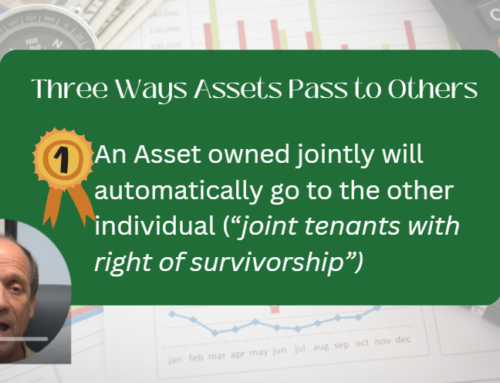Homebuyers considering an interest-only mortgage now face tougher requirements.
If you lived through the late-2000s housing crisis, the phrase “interest-only mortgage” might make you shudder. Interest-only loans, which require borrowers to pay only the interest on the loan for an initial fixed period, shouldered much of the blame for the flood of foreclosures when the housing bubble burst. Lenders approved loans for borrowers who could handle only the interest payments – but many later lost their homes when the full, unaffordable mortgage payment came due.
While interest-only loans disappeared from the mortgage marketplace for a few years, they’ve recently had a minor comeback. But this time, safeguards are in place to help borrowers understand how they work and to ensure they can afford them.
“The interest-only loans being offered today are completely different,” says Jennifer Beeston, branch manager and vice president of mortgage lending for Guaranteed Rate in Santa Rosa, California. “They’re not meant to help you stretch your buying power.”
Still, interest-only mortgages aren’t for everyone – and they remain rare. Nationally, only about 1 percent of all mortgages are interest-only loans, according to the Mortgage Bankers Association. Here’s what you should know if you’re considering an interest-only mortgage
How Interest-Only Mortgages Work
Most interest-only home loans have a 30-year term with a 10-year interest-only period. Some lenders offer only fixed-rate mortgages while others offer adjustable-rate mortgages as well. As it sounds, fixed-rate mortgages have the same interest rate for the entire loan term, while adjustable-rate mortgages adjust periodically depending on the loan details. Most ARMs today are fixed for five, seven or 10 years and then adjust annually.
 Payments are significantly lower on an interest-only mortgage during the initial phase of the loan and significantly higher during the final period. For example, on a $300,000 mortgage with an interest rate of 4 percent, the monthly payment would be $1,432 a month for a conventional 30-year fixed-rate mortgage. With an interest-only mortgage, the monthly payment would be $1,000 during the 10 years of interest-only payments. That’s a difference of $432. However, the mortgage payment would jump to $1,818 per month for the 20 years that follow. That number includes both principal and interest payments.
Payments are significantly lower on an interest-only mortgage during the initial phase of the loan and significantly higher during the final period. For example, on a $300,000 mortgage with an interest rate of 4 percent, the monthly payment would be $1,432 a month for a conventional 30-year fixed-rate mortgage. With an interest-only mortgage, the monthly payment would be $1,000 during the 10 years of interest-only payments. That’s a difference of $432. However, the mortgage payment would jump to $1,818 per month for the 20 years that follow. That number includes both principal and interest payments.
Interest rates on interest-only loans are generally comparable to those of conventional mortgages, according to Beeston. Though, some lenders charge a slightly higher interest rate for interest-only loans since they can be a little riskier than other mortgages.
You can still make payments on the principal whenever you want on an interest-only loan. To increase their equity and reduce their balance, some borrowers make monthly payments on the principal while others make an annual or occasional payment. However, you should check with your lender before you sign the loan paperwork to see whether there’s a prepayment penalty. While they are rarer, the Consumer Financial Protection Bureau says some lenders apply a penalty if you pay off a loan in its entirety or a large portion such as half of the balance within a short time.
Qualifying for an Interest-Only Mortgage
Qualifying for an interest-only mortgage requires a review of your finances. While borrowers in the past only needed to show they could afford the interest payments, now they must demonstrate they can make the full payment when the time comes.
“If borrowers choose an interest-only mortgage with an adjustable rate, they have to qualify based on the highest possible future rate as well as the fully amortized payment,” says Cristina Zorrilla, assistant vice president for mortgage pricing and investor relations at Navy Federal Credit Union in Fairfax, Virginia. That requirement protects borrowers from taking on a debt they cannot repay.
Beeston says the specific qualifications for the loans vary from one lender to another. For example, one might require a 10 percent down payment for an interest-only mortgage, while another might ask for 30 percent.
Minimum credit scores also vary, as does the maximum allowable debt-to-income ratio, which compares your monthly debt obligation (including your house payment) to your gross monthly income. Most lenders will require a credit score of 700 or 720 and above for an interest-only loan, says Beeston.
“It’s just consistently harder to qualify for an interest-only than a traditional fixed-rate loan,” says Beeston.
Who Could Benefit From an Interest-Only Mortgage?
Here are some types of borrowers who might consider an interest-only loan.

Borrowers most concerned with cutting their monthly payments: Interest-only loans can make sense for people who care more about lowering their monthly payment than paying off their loan, says Zorrilla. This category can include people who plan to relocate or downsize before the interest-only period ends.
Borrowers with a more variable flow of income: The best use of an interest-only mortgage is for a short-term cash flow issue, says Len Hayduchok, president and CEO of Dedicated Financial Services in Hamilton, New Jersey. For example, someone who owns a seasonal business may want the option of only paying interest during the off-season.
The same might be true for a stock market trader or someone who earns commissions that might vary from month to month.
An interest-only loan can also be appealing to someone about to earn a medical or law degree or who has the guarantee of a substantial increase in income in the future. But Hayduchok warns that taking on more house than you can afford can be risky. He recommends waiting until that income is in hand.
New homeowners still trying to sell their previous property: Zorrilla says interest-only mortgages might appeal to borrowers who just purchased a new house but who still need to unload their old property. Once they sell their house, they can make a lump-sum payment toward the principal balance on their interest-only loan, she says.
Sophisticated investors and borrowers: Interest-only loans offer flexibility for people who want to use their cash for other investments throughout the year, says Beeston. For example, you can trade stocks with the cash you would have paid toward the principal on a conventional mortgage and then use the profits to pay some of the principal in a lump sum. You can be in control of your own cash flow and make a $100,000 payment on the principal at the end of the year if you want, she says.
“Another profile of a good candidate for an interest-only loan is someone who moves around and relocates a lot but wants to get into the housing market in a location where values are rising,” says Beeston. “It could be better than renting, as long as values are rising.”
If the value increases, the buyer could increase his or her home equity without even making payments on the principal. Beeston warns, however, that this scenario is best for a more sophisticated borrower, since it can be easy to underestimate the cost of selling and overestimate how fast home prices will increase. Buying and selling within a few years can end up being costly unless home prices rise quickly.
Risks of Interest-Only Mortgages
The biggest disadvantage of an interest-only loan is that you aren’t building up equity by making mortgage payments. For example, after 10 years of interest-only payments, your loan balance will be the same as when you took out the loan. If you had been paying the principal and interest on a $300,000 loan at 4 percent, you would have paid off more than $64,000 of the principal during that time.
“They work best if you’re making at least occasional payments to build up your equity on top of the 20 percent down payment requirement,” says Zorrilla.
At most, Hayduchok says, borrowers should make interest-only payments for no more than a year or two. “Don’t treat paying only interest as normal behavior,” says Hayduchok. “You need to have the mindset to pay it off.”
As Americans saw during the previous financial crisis, home values can decline. So even borrowers who make a 10 or 20 percent down payment could find themselves underwater, or owing more than their property is worth, if values plummet. This could pose a problem if you’re hoping to refinance and haven’t paid down the principal.
An interest-only mortgage can be a good financial management tool, says Zorrilla, as long as you completely understand how it works so you can make an informed decision.
Article originally shared in US News: https://money.usnews.com/loans/mortgages/articles/what-is-an-interest-only-mortgage








